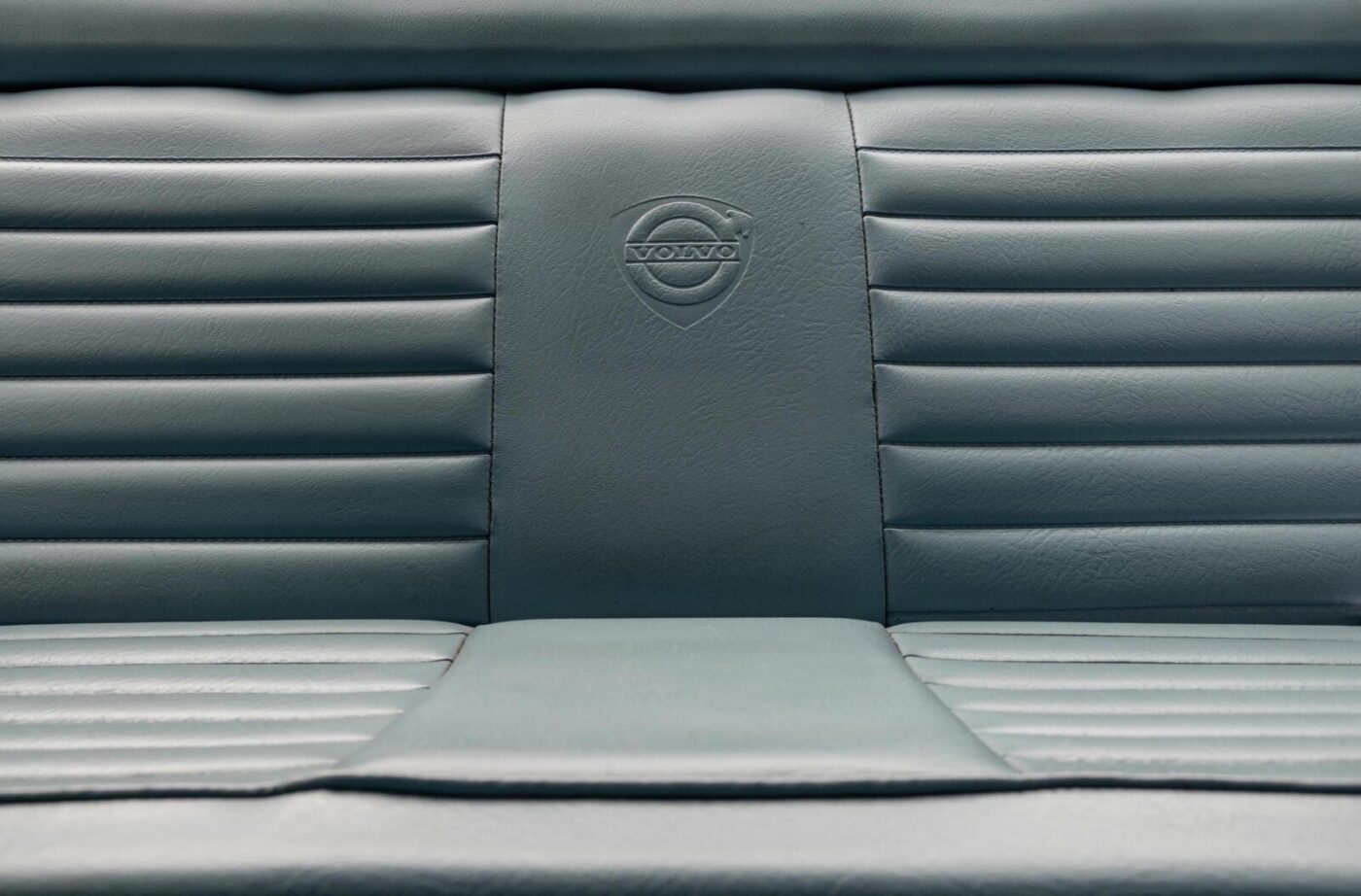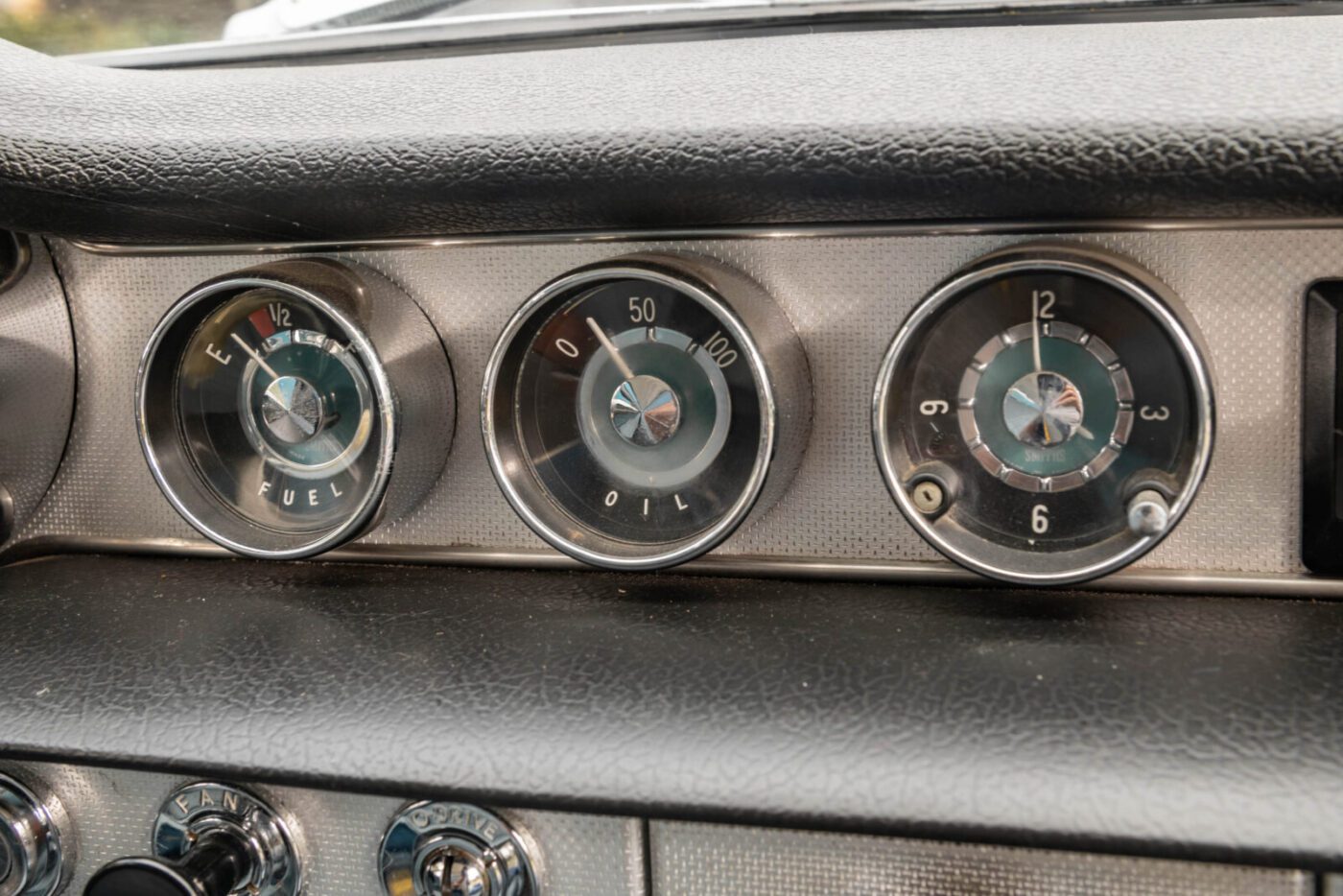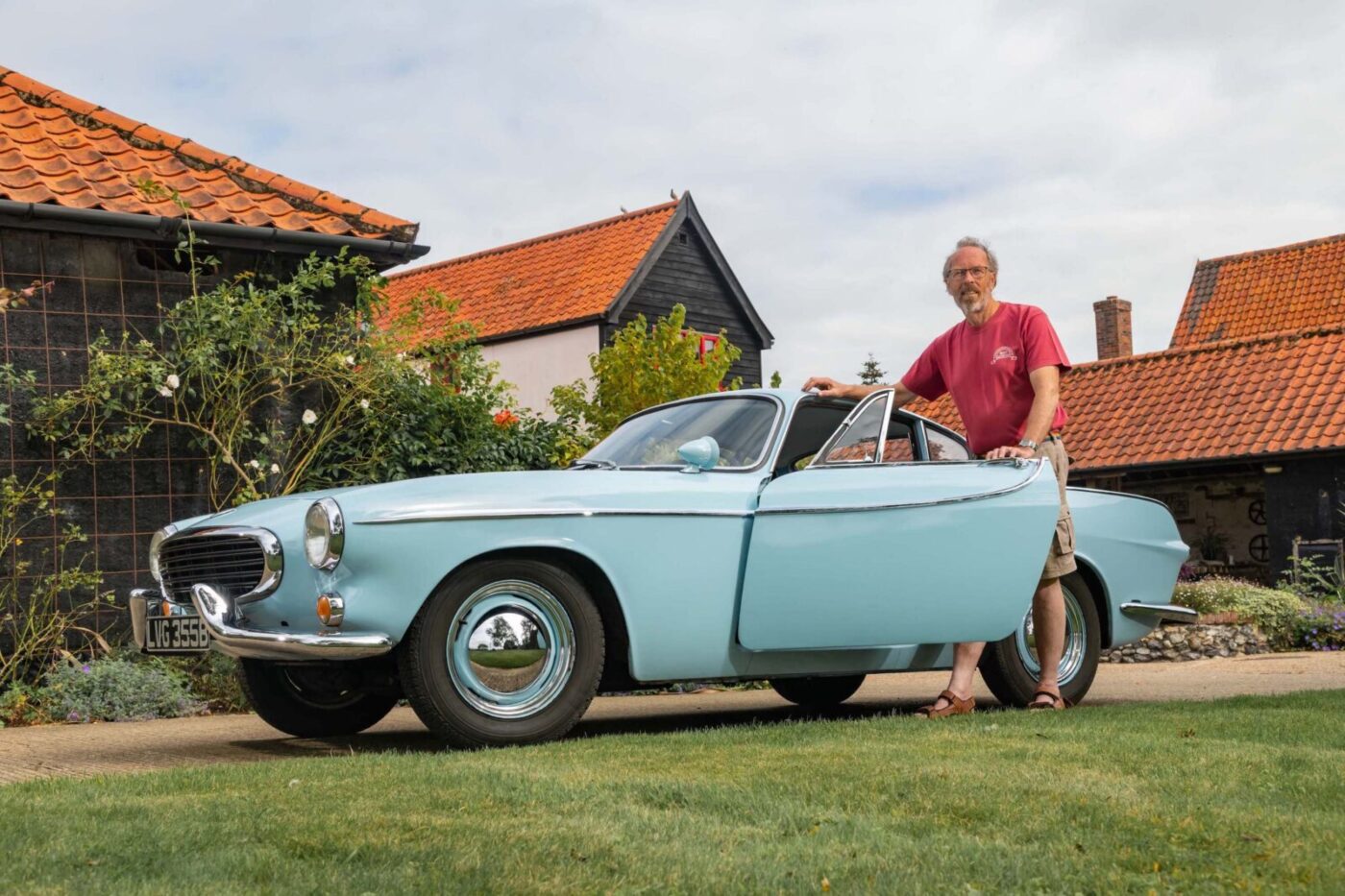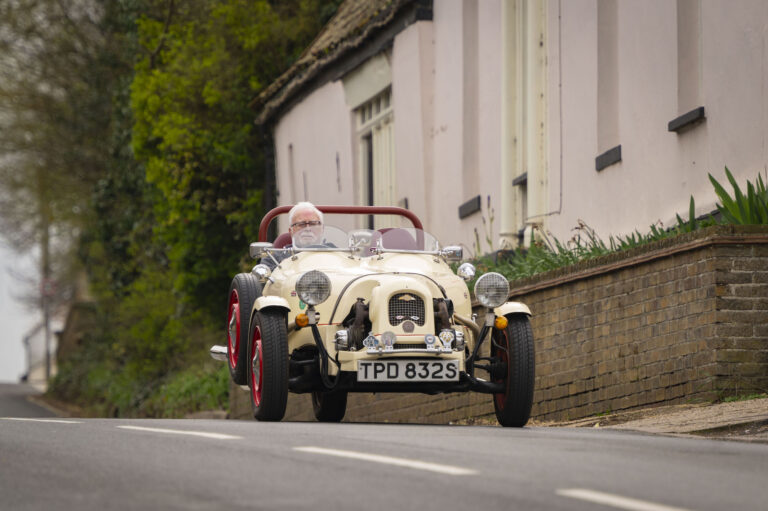In sun-baked New Mexico, where the cars don’t rust, it’s not uncommon for people to drive the same vehicle for decades.
So when Mark Miller, who had just graduated from university in Albuquerque, bought his Volvo P1800S in the spring of 1970, he was always in it for the long haul.
“I really thought that might be the last car I ever owned,” he says, now a long way from his roots and settled in south Norfolk – along with the elegant Swede.
“I was always, to some degree, ecologically aware, and I’ve always been one that hates to throw anything away. I’ll make something continue to work for as long as I can make it work.
“There’s a tradition of that in New Mexico because cars last a long time, and it’s still common to see cars that are 30 to 40 years old in everyday use.”
The Volvo may no longer be his daily driver – Norfolk is not New Mexico – but more than 50 years after he bought the 1964 car, it’s still in regular use.
“I try to drive it at least once every six weeks to keep the fluids flowing through it,” he says. “It’s mostly taken out to three or four club runs in the summer. This year, with Covid of course, there weren’t any.
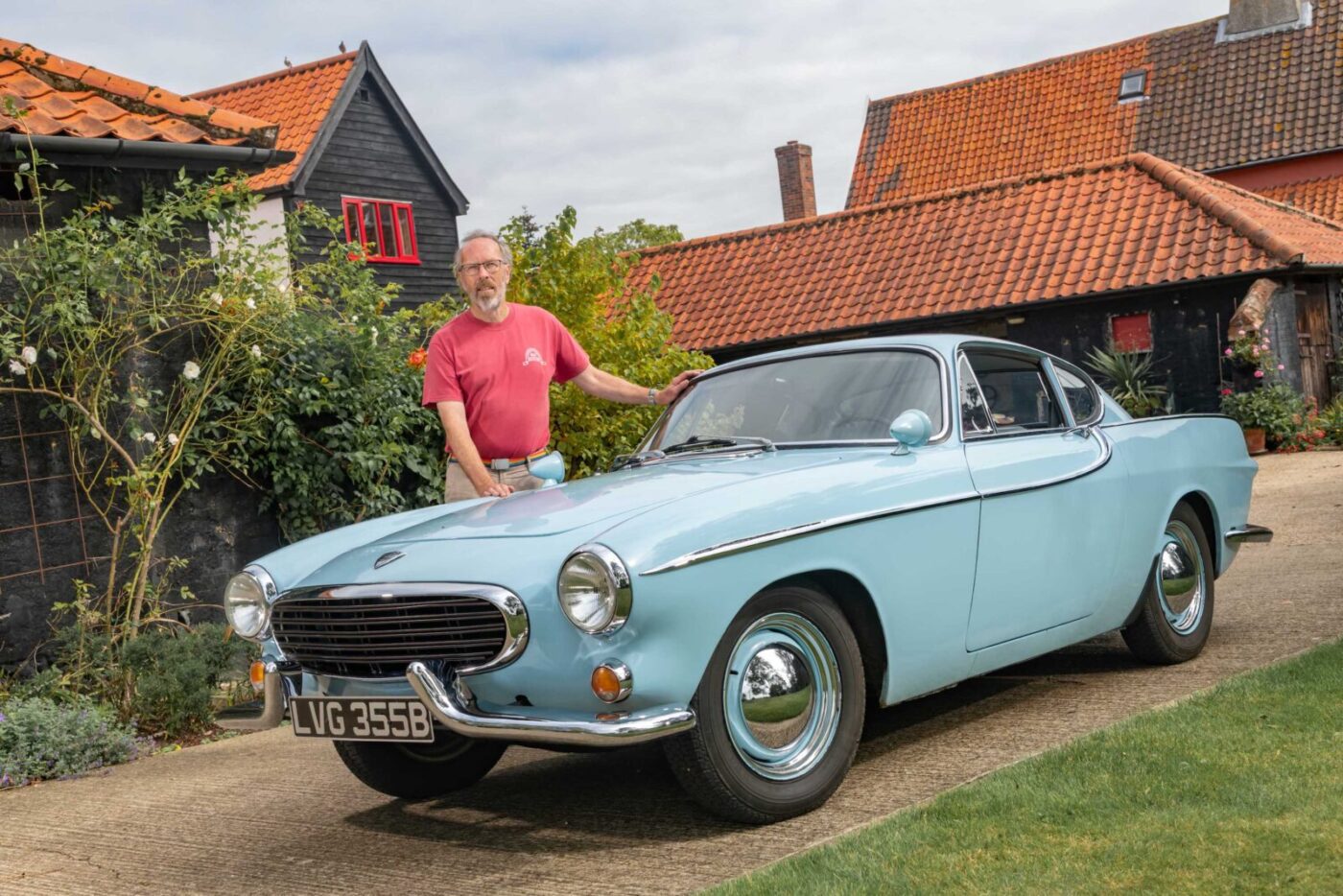
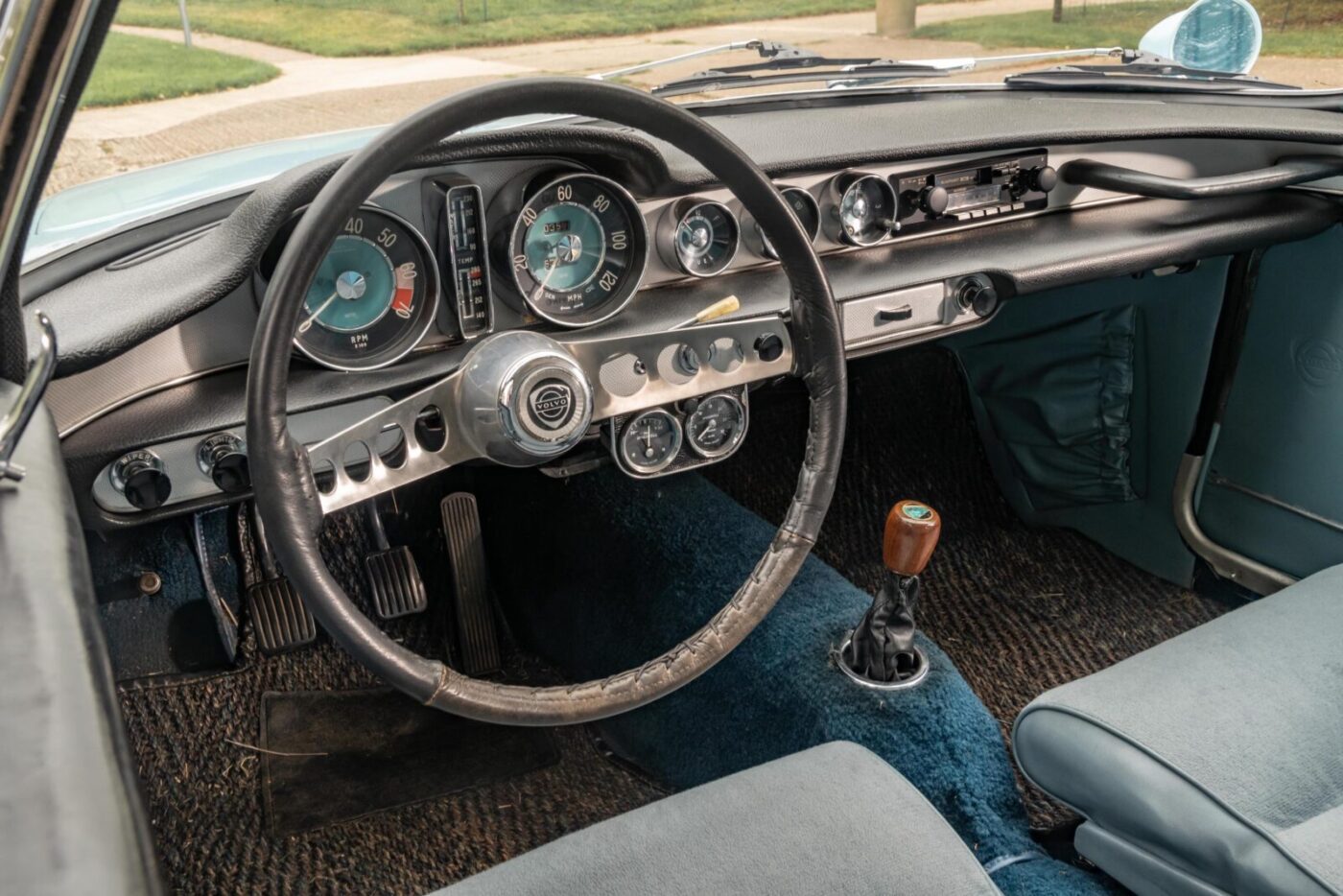
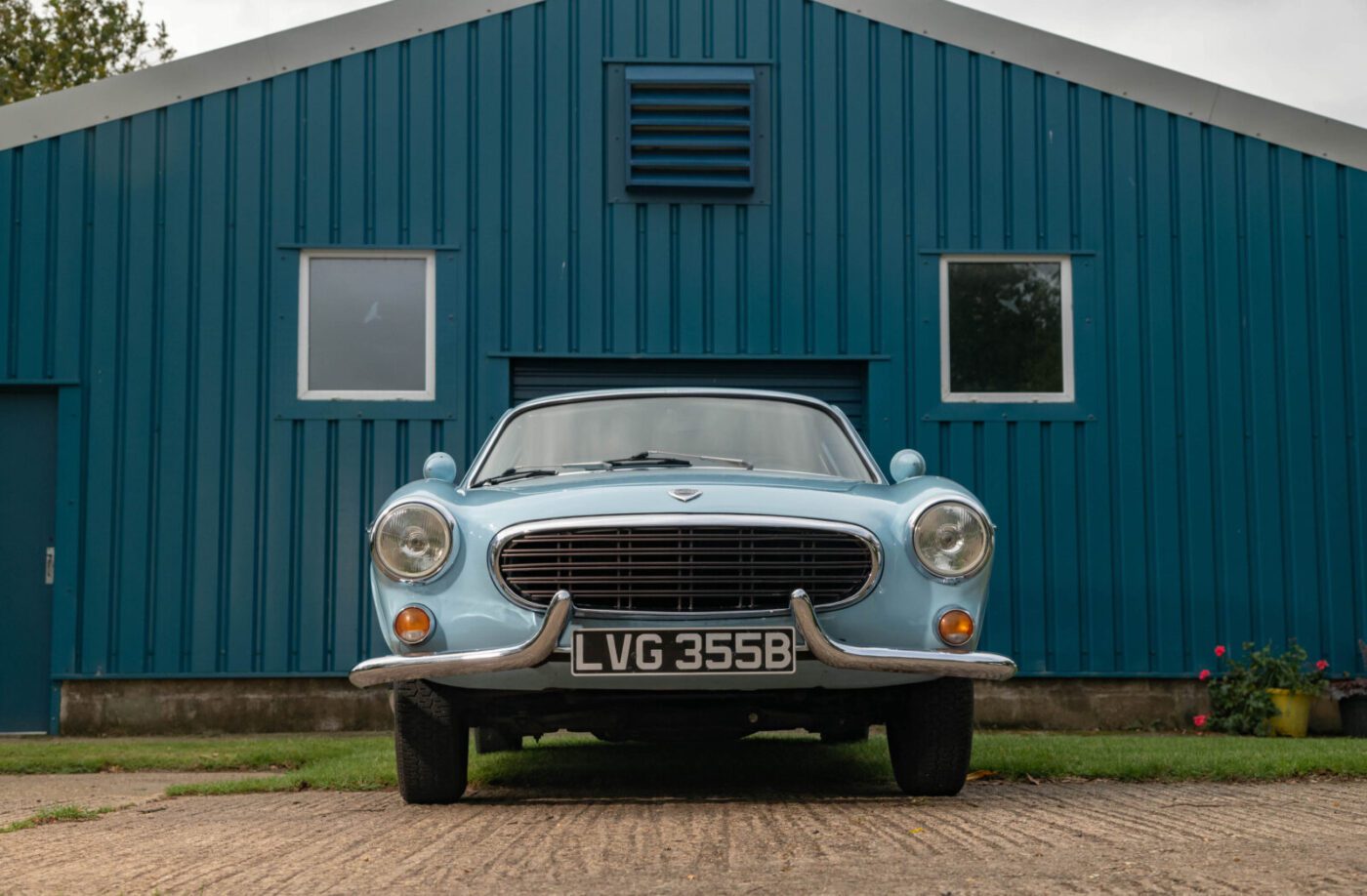
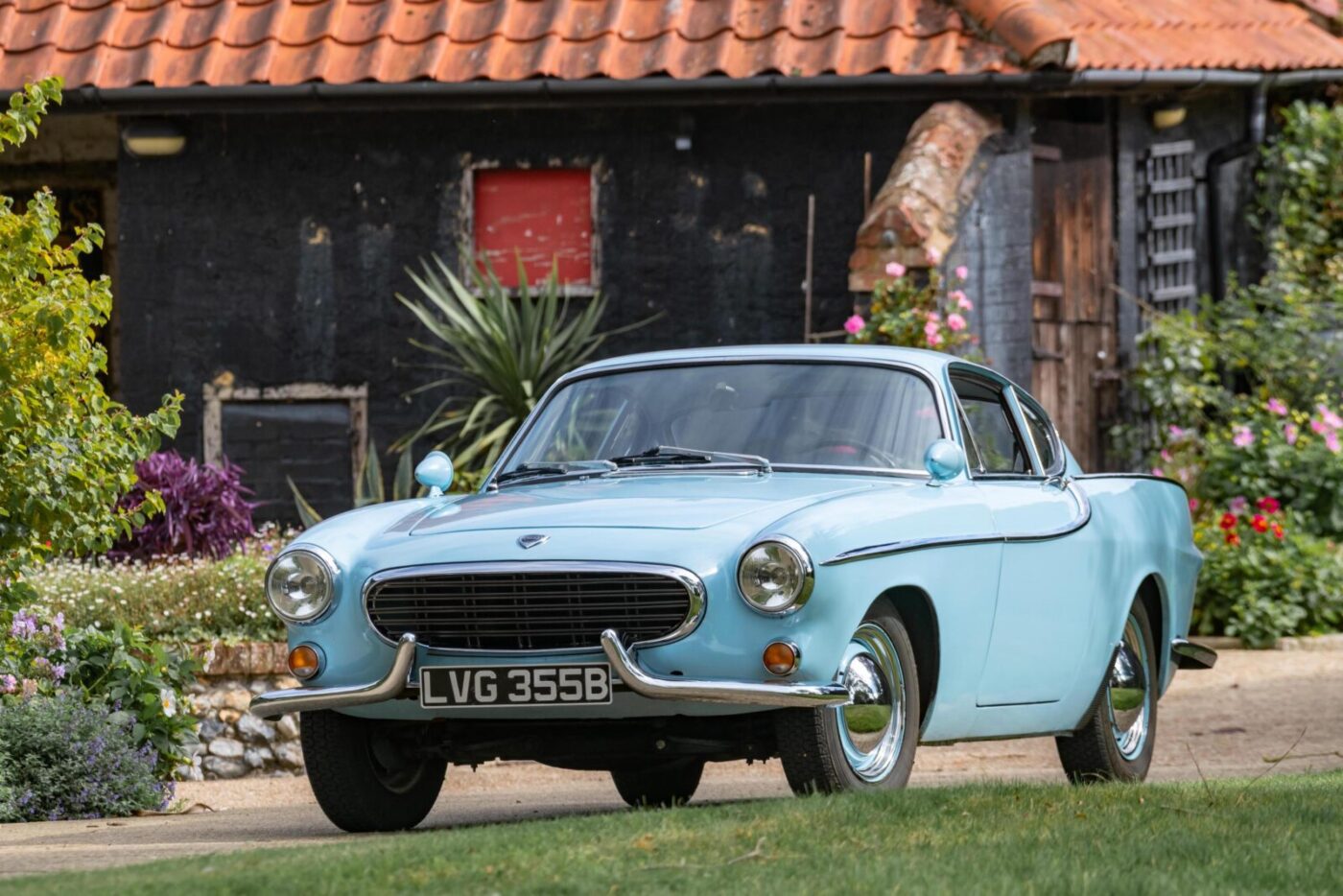
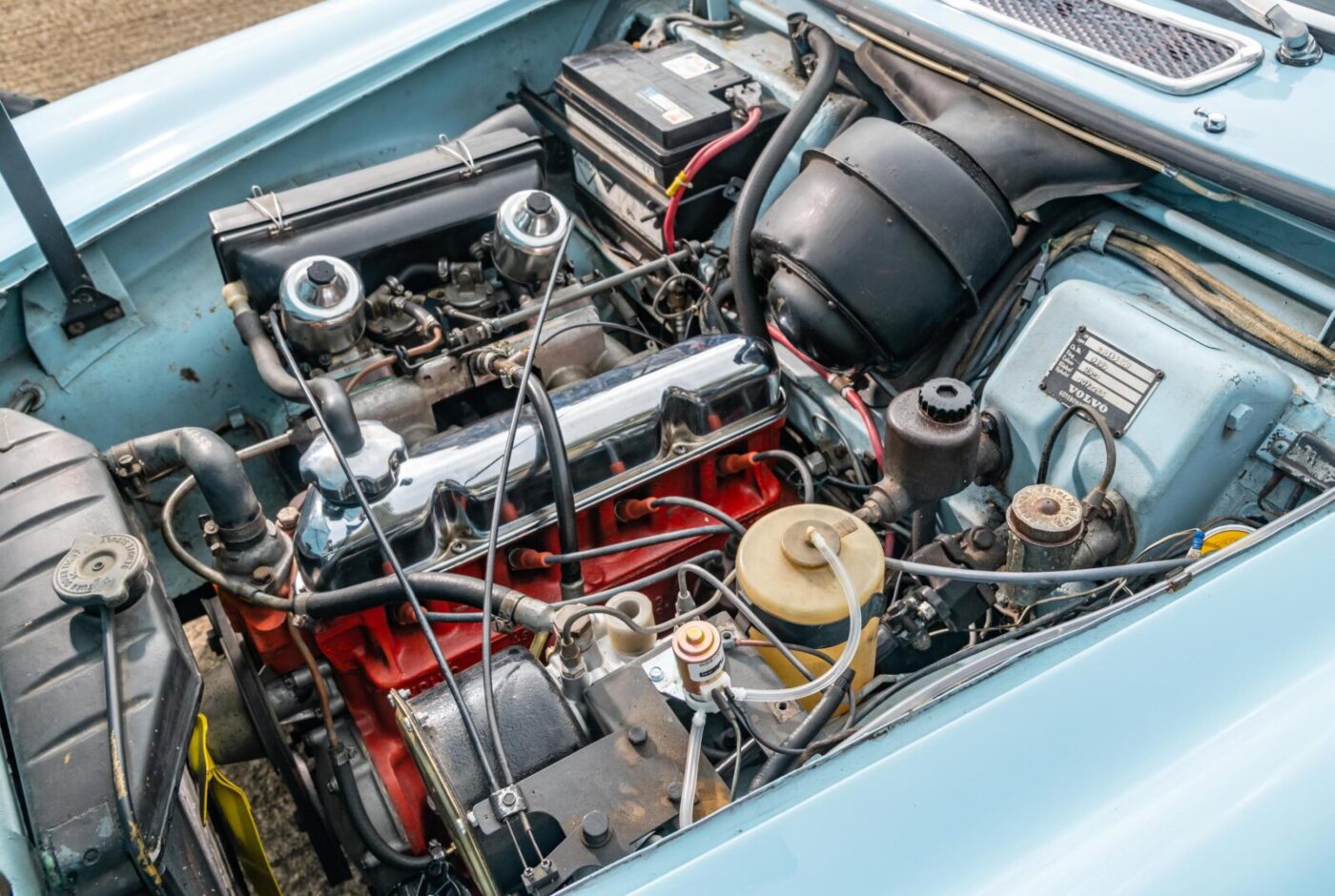
Keep going
“I’ll just keep going as long as I can keep going.”
Mark, 74, was born in Ohio but grew up in Los Alamos, the isolated New Mexico town known as the location of the secretive Manhattan Project, which developed the world’s first atomic bomb during the second world war.
“My dad was a metallurgist at the National Laboratory, and we moved out there in 1950, after the Manhattan Project but into the Cold War years, so it was still a secured town,” he remembers. “Of course, as a kid you think that’s normal.”
After graduating from High School in 1964, Mark studied architecture at the University of New Mexico in Albuquerque, and it was there that the rakish P1800 first caught his eye.
“The Volvo dealer was just across the street from the university, so I’d seen the 1800s in the showroom,” he says. “I always liked the look of it and bought the car as a gift to myself when I finished university.
“I paid $1,300 for the six-year-old car, which was well under the book value, but it needed a bit of work, so…”
It was still the most Mark had ever paid for a car, his first a 1955 Nash Rambler, “an interesting little car with a side valve, six cylinder engine and a four speed automatic”.
“Then it was a succession of cars, each of which usually cost less than the one before it, including a ‘56 Plymouth that I paid $50 for and drove for a year,” he says.
READ MORE ABOUT SOME OF OUR GREATEST CLASSIC CARS WITH

A series of articles on our Cult Classics site.
Rust bucket
“The favourite, that I wish I still had, was a ‘53 Studebaker hardtop, but it was a real rust bucket and I’d butchered it around in my hot rod aspirations, put a Chevy V8 in it, that sort of thing.
“It was fast, but it wouldn’t stop very well. I did almost all the work myself, including attempts at bodywork – not very successful, I have to say.”
Mark has always had a thing for the unusual, and he admits that the Volvo was something of an “outlier” among most of his friends.
“The crowd I was with at the time were all American car drag racers,” he explains. “My roommate had a Plymouth GTX with a hemi: 7-litres, 425hp as it comes from the factory and you soup it up from there. Brutal things.
“One friend used to say there’s no substitute for cubic inches. They were interested in the speed and all that.
“But I always liked foreign cars, and I’ve always liked strange cars, the weird ones. I still have a fascination with certain American cars too – Kaisers, Studebakers and Packards etc. The ones that nobody over here ever hears about.”
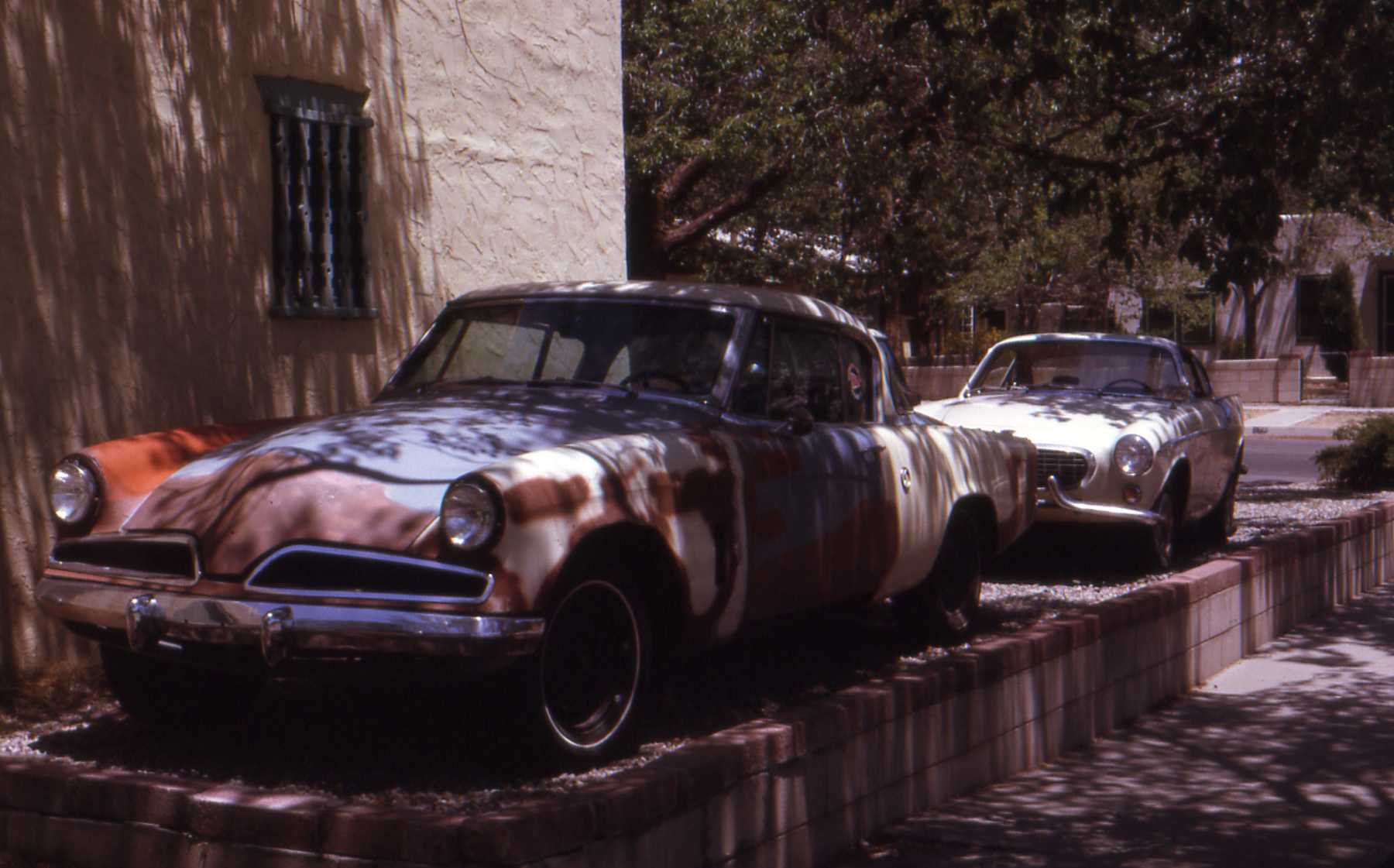
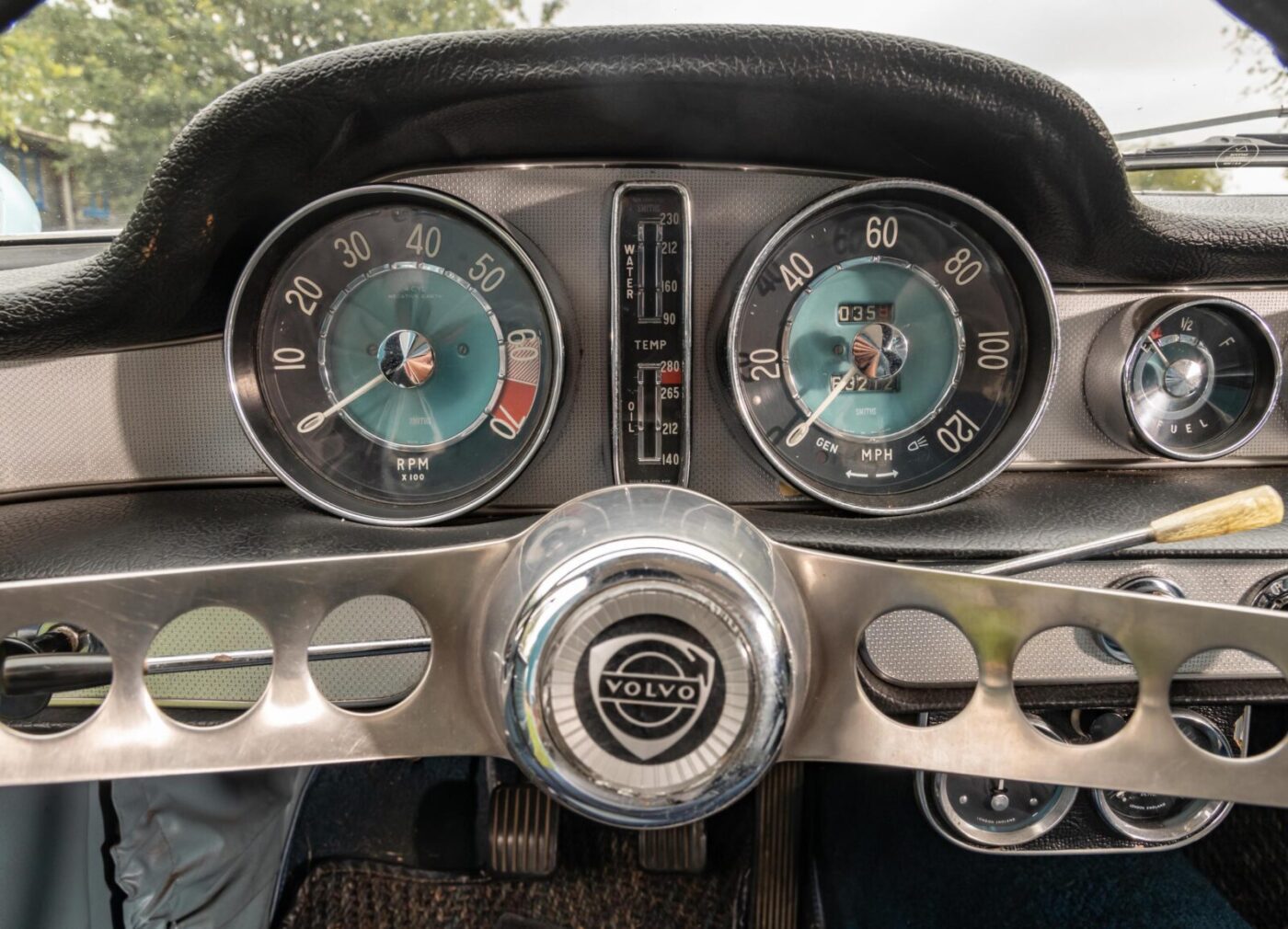
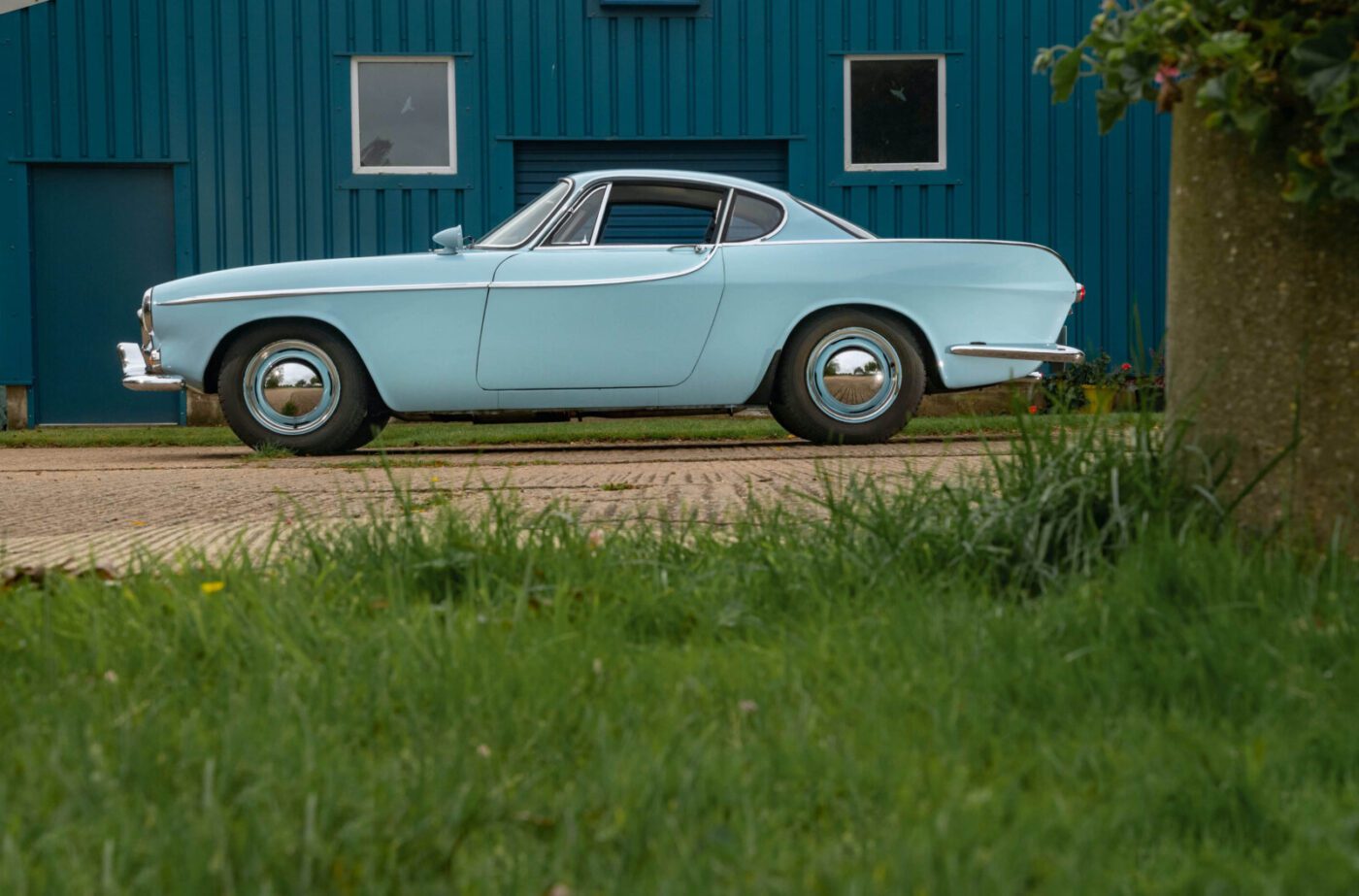
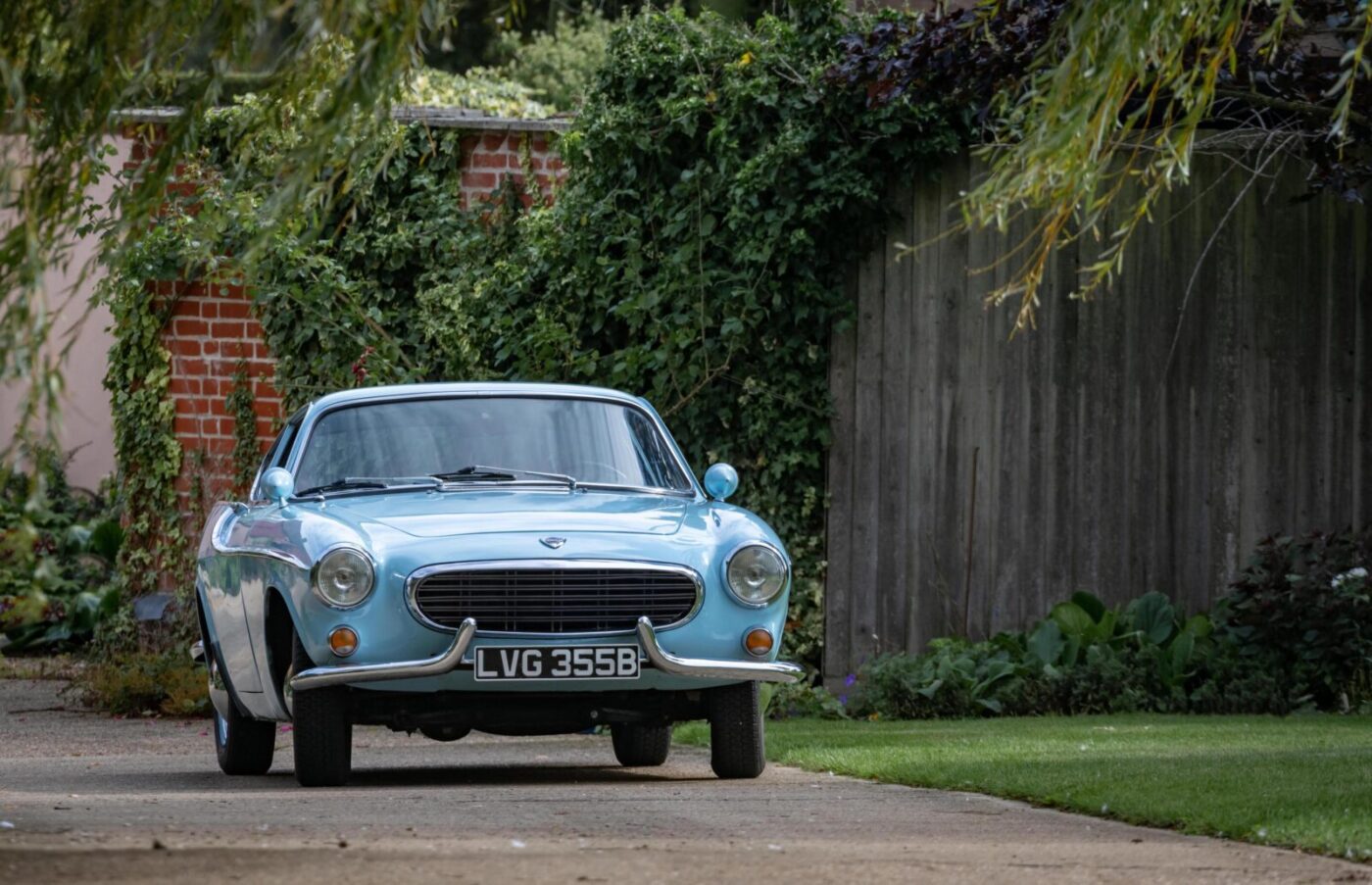
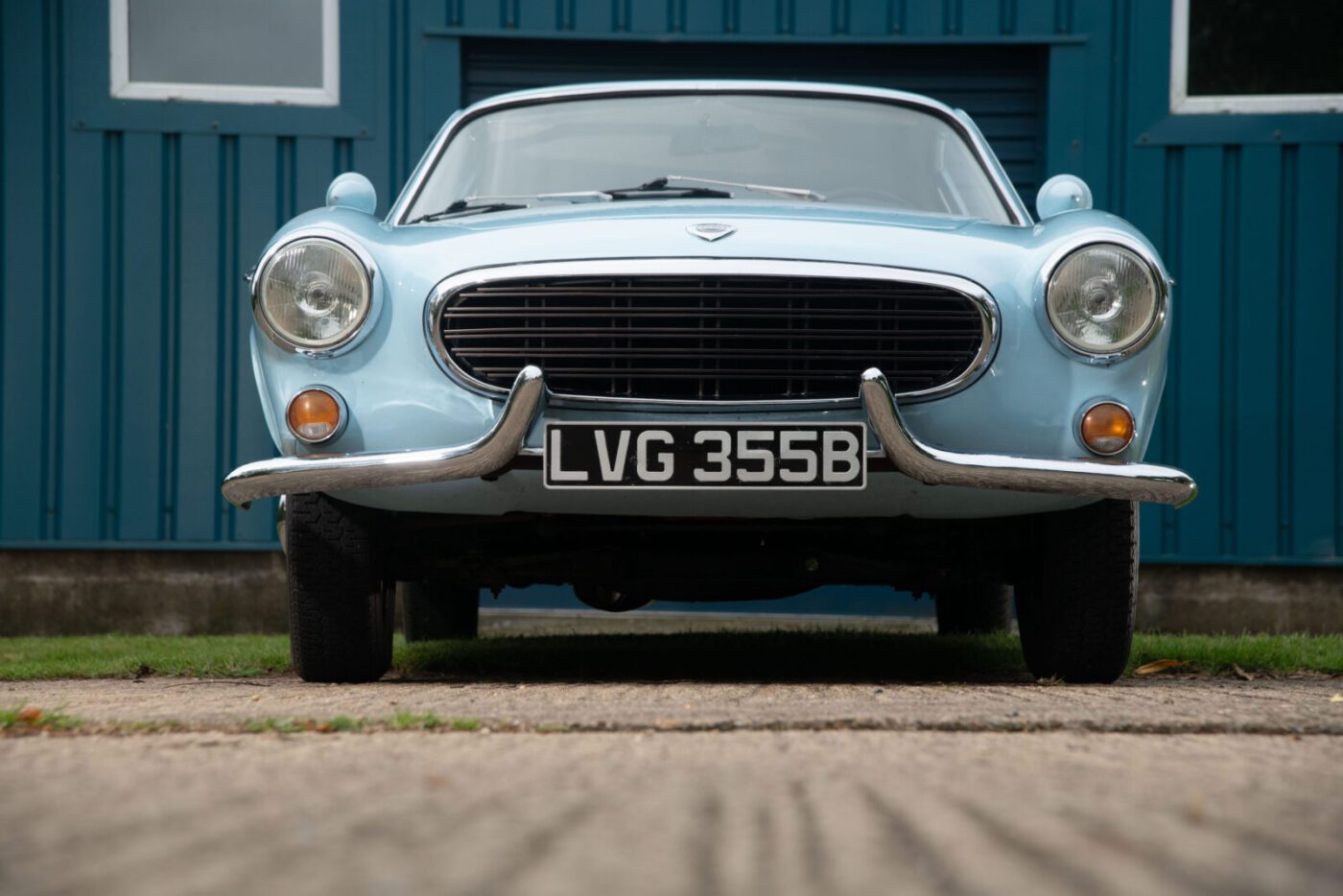
The Saint
The Volvo P1800, officially launched in 1961 at the same Geneva Motor Show as the Jaguar E-Type, was given a sales boost when it was chosen as Roger Moore’s car in hit British TV series The Saint.
Jaguar had turned down the opportunity, not that it did the E-Type any long-term harm…
Of course, at the time, Mark was in the US, and had never seen Moore’s antics as Simon Templar, a sort of modern-day Robin Hood.
He just liked the car, and got on the phone when he saw a classified advert for a 1964 car in the local Albuquerque newspaper.
The car belonged to another student, who was dropping out of university, moving elsewhere and didn’t want to take the car with him.
Originally registered in New York, the Volvo was white with a red leather interior, and a little rough around the edges.
“It had been, not abused perhaps, but certainly not been taken good care of,” says Mark. “The leather seats were only six years old but had already started to perish, the seams had all gone, and the dashboard was severely cracked in the dry and the heat. It needed quite a bit of work.
“I didn’t, at the time, try to do any restoration on the thing – it was my driver. I’d do a few things now and again, but mostly just to keep it running. And I didn’t have the money for it anyway.”
The Volvo was Mark’s daily driver for about 10 years, used not only for work but for exploring the wide open spaces of New Mexico.
81.5% of customers could get a cheaper quote over the phone
Protect your car with tailor-made classic car insurance, including agreed value cover and discounts for limited mileage and owners club discounts

Into the desert
“Given New Mexico is the size of the whole British Isles but with only 2million people, there’s a lot of open country, a lot of desert and the roads are a bit basic,” he says.
“I’ve driven that car many places a lot of people in this country wouldn’t drive a 4×4. I’d occasionally go out into the desert somewhere with a cot and a sleeping bag and just sleep out under the stars. It handled the terrain fine, it’s just about being careful and watching what you’re doing.”
The Volvo was a regular on the fabled Route 66, as far east as the Texas border, and as far west as California.
“Route 66 is the main drag in Albuquerque so I was up and down there all the time,” adds Mark. “It didn’t go that much out of New Mexico, aside from one trip to California, coming back across Nevada and Utah and down through Colorado.
“It was a good car – I never had any real problems with it.”
Apart, that is, from a broken speedometer, which didn’t seem to hamper Mark’s ability to tell how fast he was going.
“I got used to judging my speeds off the tachometer instead and just knowing what gear I was in,” he says. “I got quite good at it because I used to drive in time-speed-distance rallies, similar to club runs in the UK but with timed intervals, and I always finished in the top third! You got deducted points if you got to a checkpoint too soon.”
He got into the rallies thanks to a friend with a Triumph TR4 while working in Colorado, and still takes part in similar events today with the Sporting Car Club of Norfolk.
“It’s all for the fun of it,” he says. “More often than not it’s the only Volvo 1800 on the runs. You do see other ones occasionally, but not very often.”
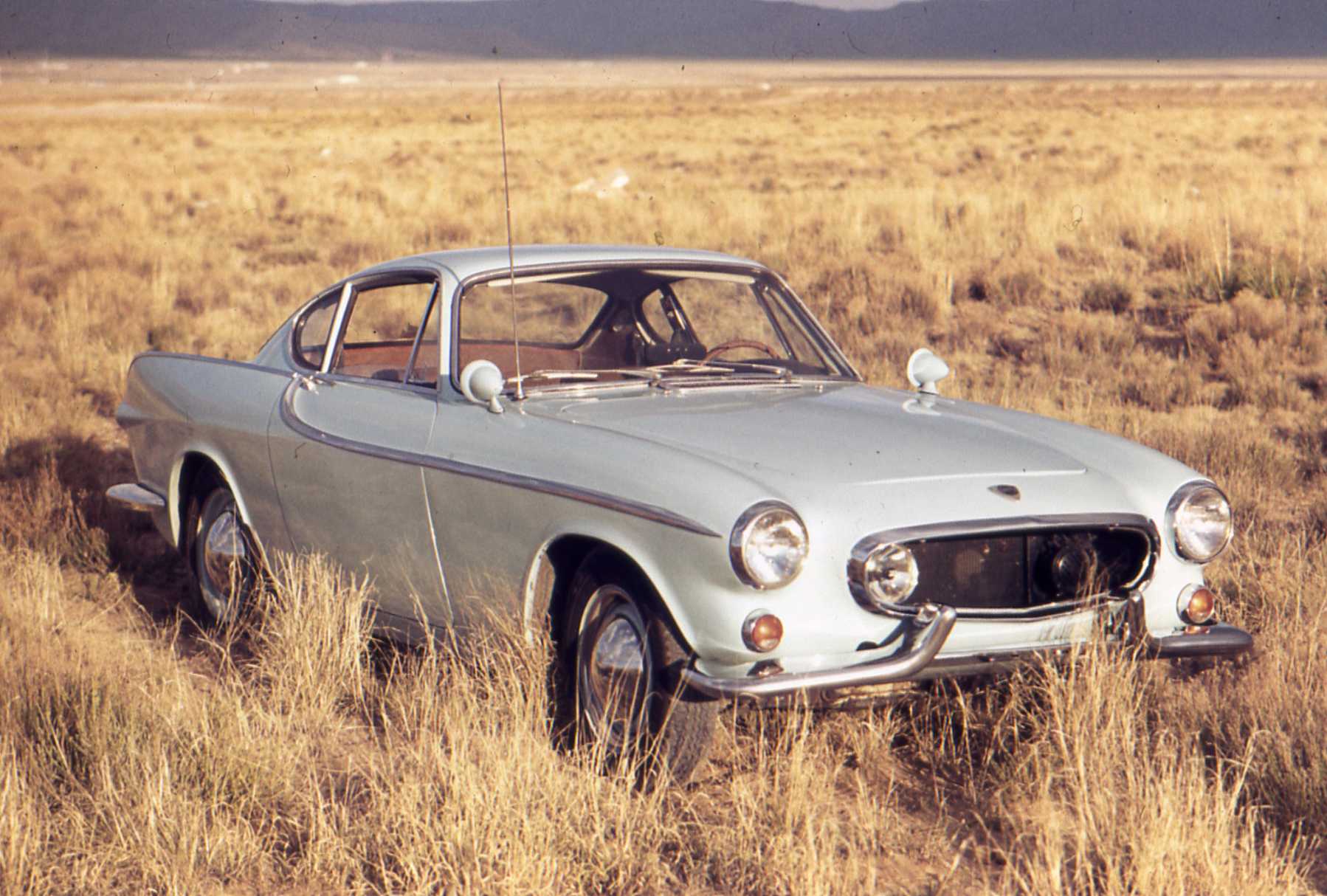
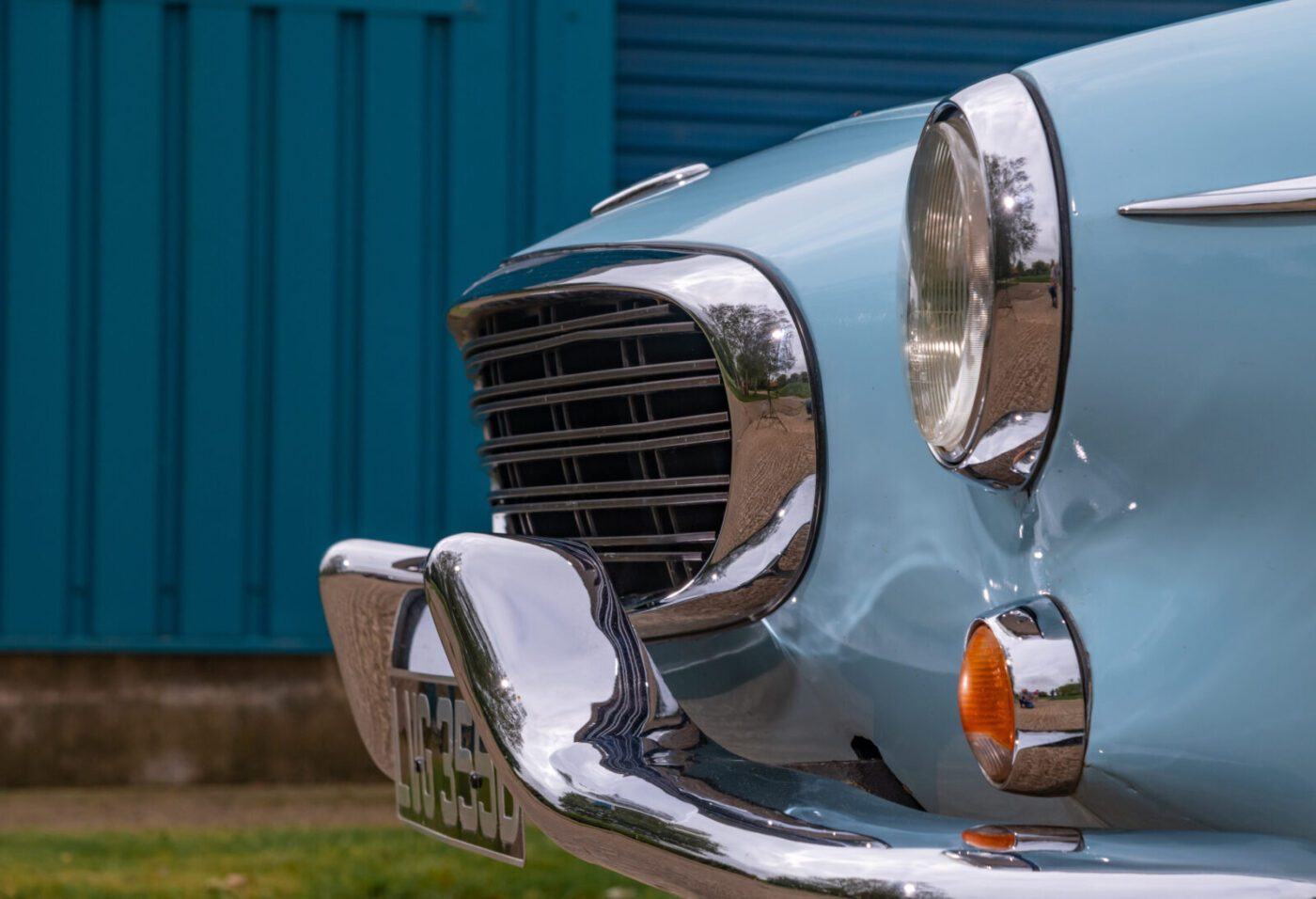
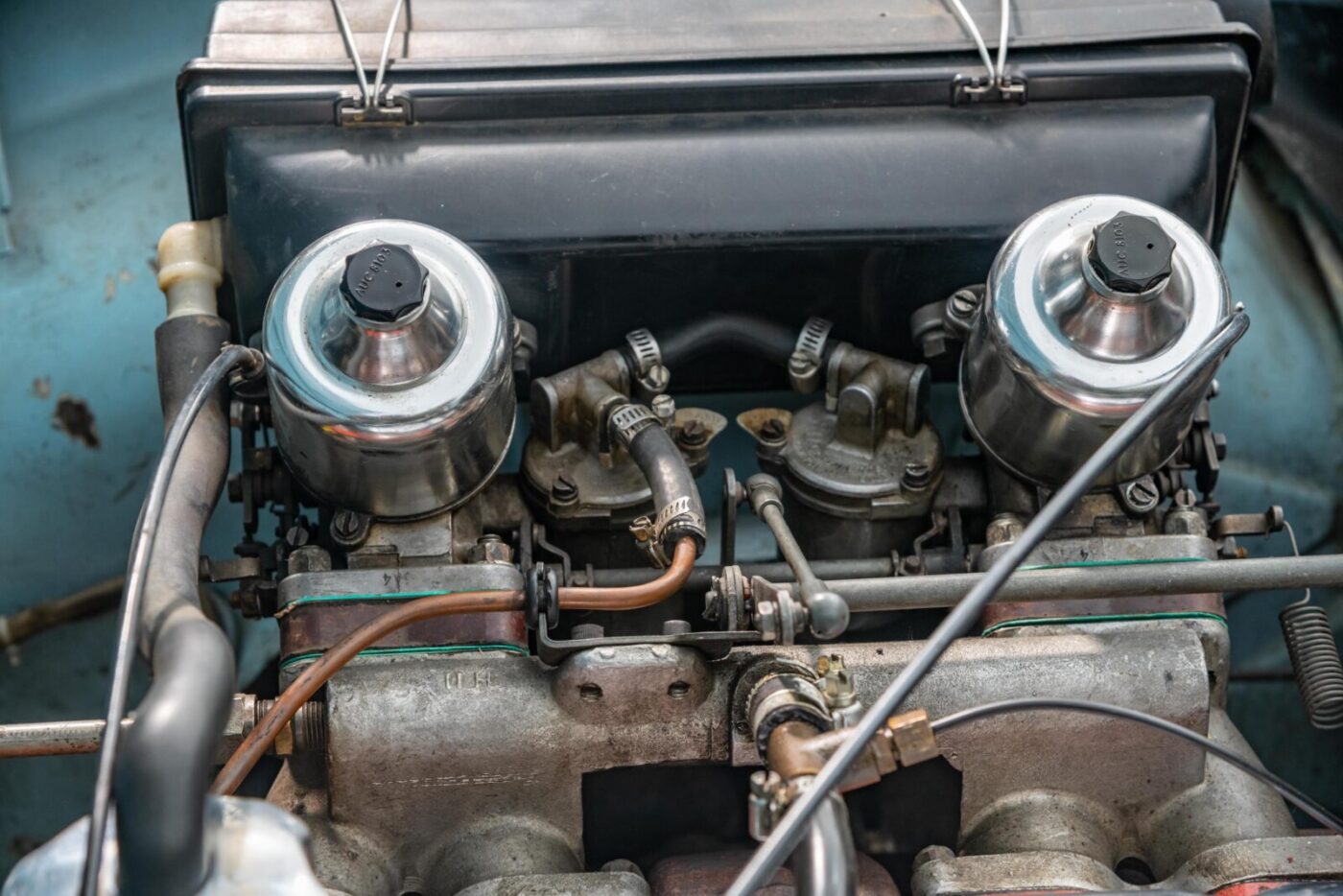
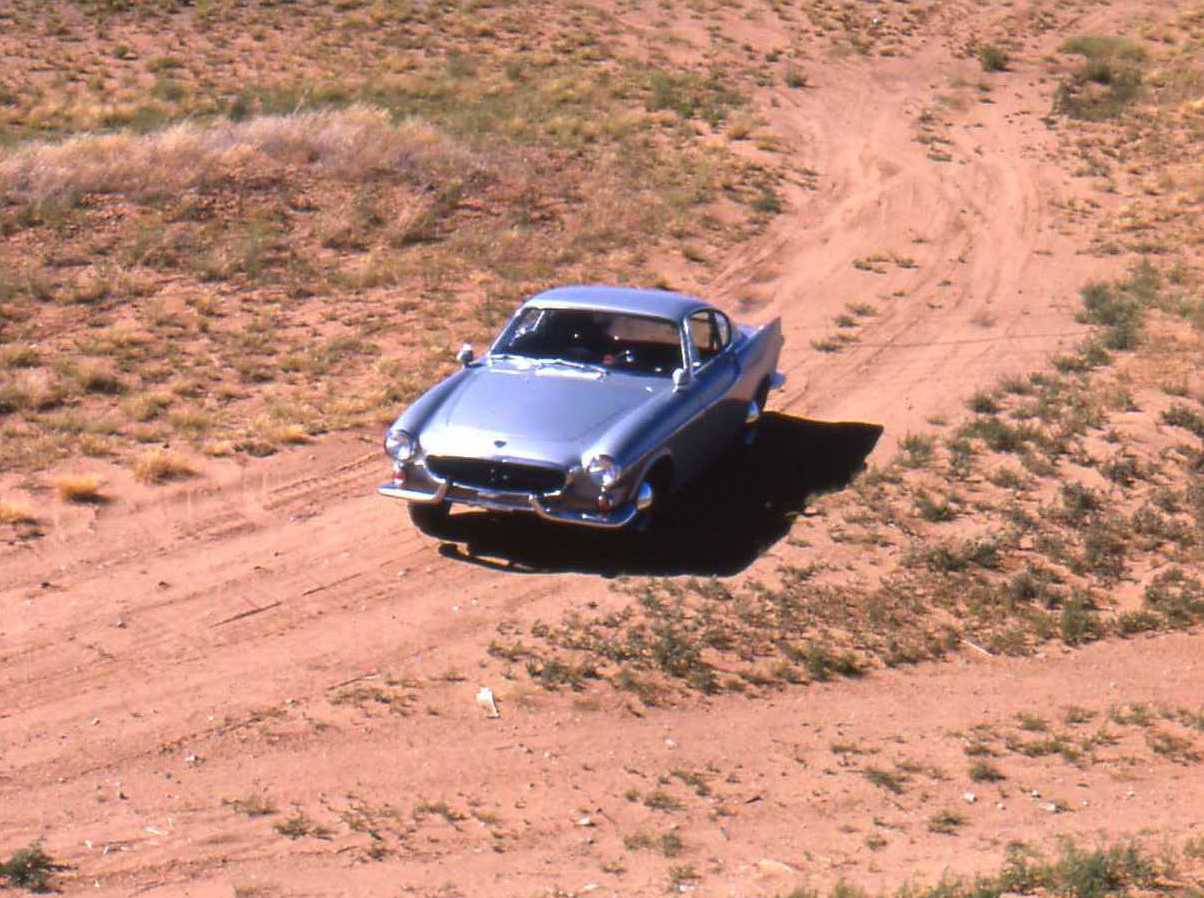
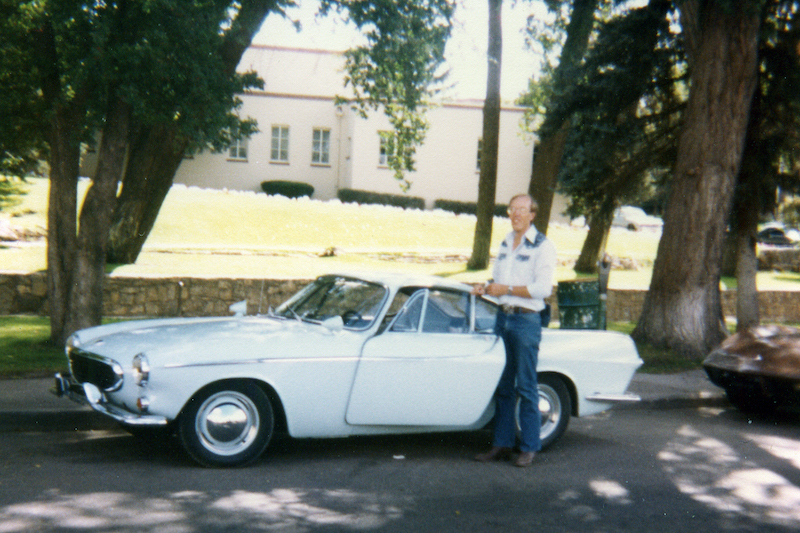
Tidying up
In that first decade of ownership, once Mark had started earning, he set about tidying up the car, first on the outside and, much later, the interior.
“I had it painted silver when I got a little money together,” he says. “But back in those days the metallic paints didn’t last very well, especially in the western American sunlight, so that faded out.”
A second silver respray also faded badly after about three years, so Mark opted for a non-metallic light blue he saw on another car.
“I just saw a powder-blue, early ’70’s Plymouth driving down the road and thought ‘that’ll do’,” he says. “I didn’t want anything too dark because the bodywork, if you look carefully, has little waves in it and a dark colour would have really accentuated how irregular it was.”
In 1980, Mark’s life changed course forever when he met his now wife, Paddy, on holiday in Cyprus.
Work in the US had dried up in 1979 and, “still single and fancy free”, he took on a contract to work on architectural projects in Saudi Arabia.
“They had very good holiday arrangements,” he recalls. “You got three breaks per year with paid airfare to anywhere in Europe and one at the end of the year back to the States, and I was in Cyprus on one of those little jollies in 1980 when I met Paddy, who was a holiday rep shepherding a group of people around.
“It sounds like a holiday romance. It wasn’t, we just sort of liked each other and started corresponding as pen pals really.”
Mark returned to the US, Paddy returned to England, and the pair met up once a year for about four years, alternating visits between the two countries.
On her trips to the US, Paddy rode in the Volvo, from Albuquerque up to Santa Fe and on to Los Alamos, visiting Mark’s former haunts.
“By that time it had retired from being my everyday car,” he says. “I had a mark 1 Scirocco instead, and those are now rarer than the Volvo.”
READ MORE ABOUT SOME OF OUR GREATEST CLASSIC CARS WITH

A series of articles on our Cult Classics site.
Comprehensive restoration
During this period, the P1800 underwent its final, and most comprehensive, restoration, including a further respray in the same pale blue, rechromed brightwork, and a refreshed interior.
Much of the work was done by experts, but Mark stripped out the instrument panel and re-covered the dashboard himself, sourcing some of the original factory plastic, “probably the last bits that were available”.
The worn-out leather seat coverings were replaced in the front by a dralon-type fabric, while a blue vinyl paint was sprayed on to the rear seats and interior door panels.
“Leather doesn’t make a whole lot of sense in the New Mexico desert, especially in a car that doesn’t have AC – it was just too hot, I would have had to have some sort of cushion just to sit on the seat,” says Mark, who is not overly concerned with originality.
“It’s a mild custom, you could say. It’s got the custom mirrors on it, from K-Mart, the grille is from a later model, the interior mirror is on the glass instead of on the dashboard, I lost the hubcaps somewhere so those are baby moons meant for a ‘56 Chevy and they just happen to fit.
“As you see it here is essentially as it was in ‘83.”
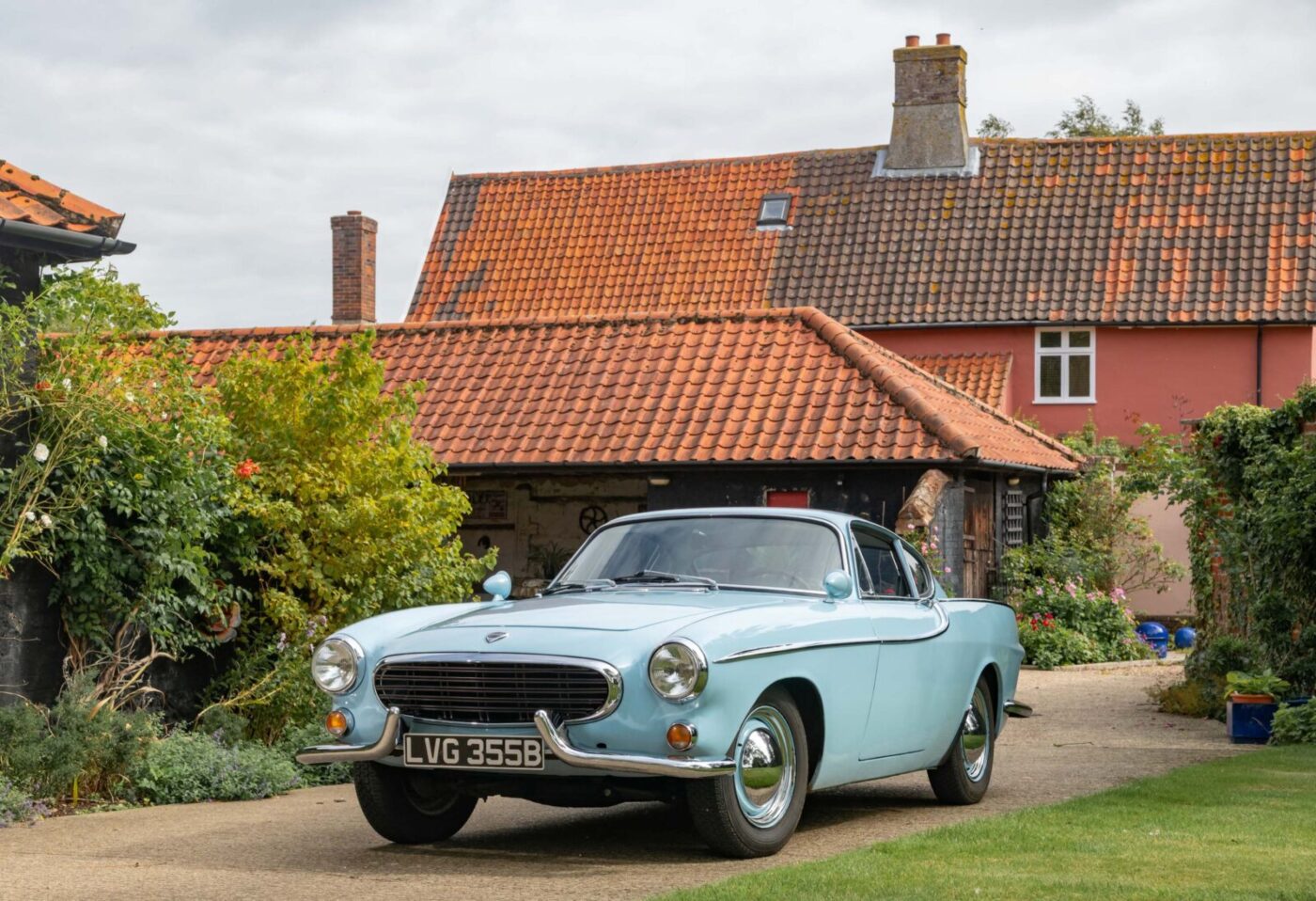
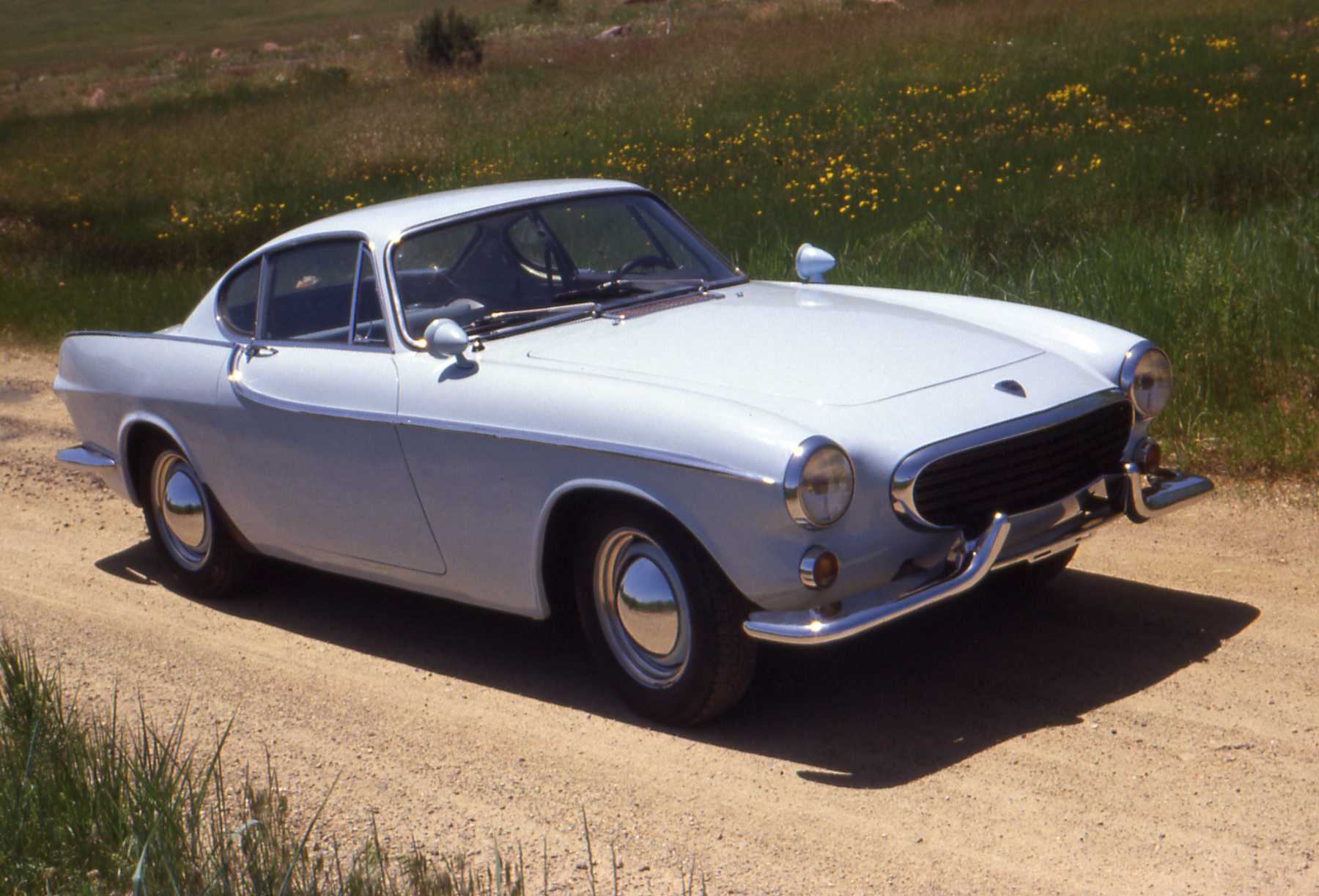
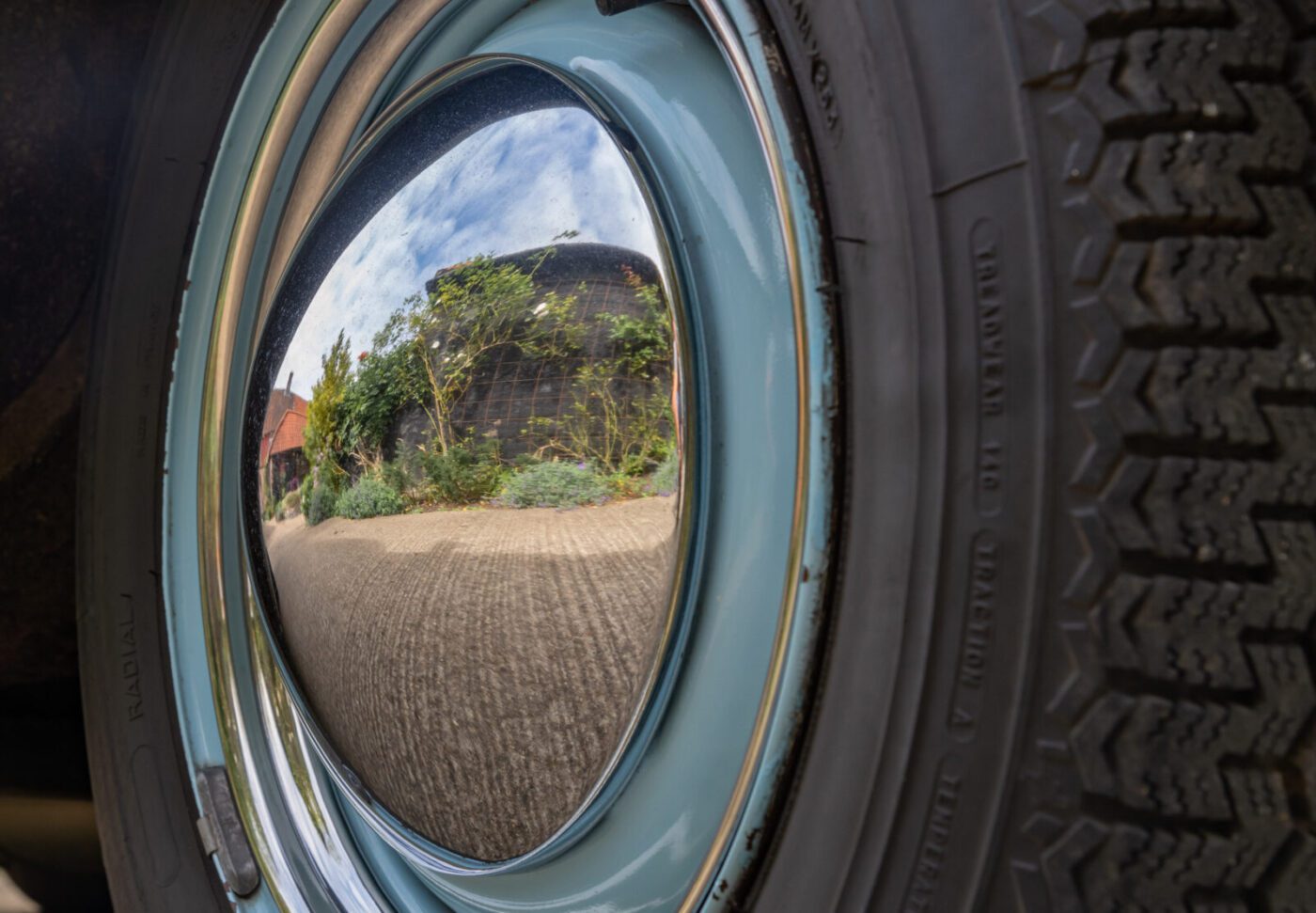
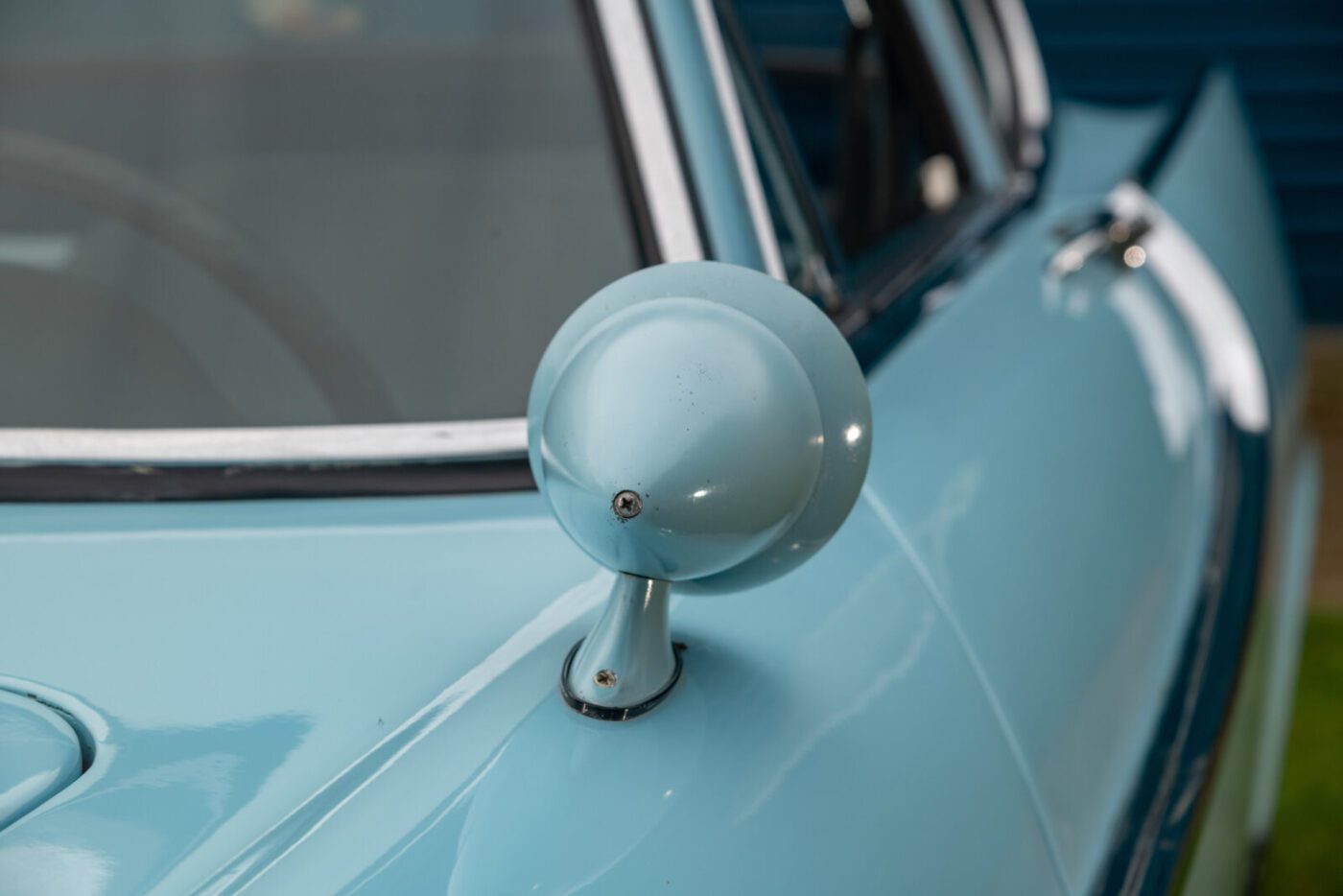
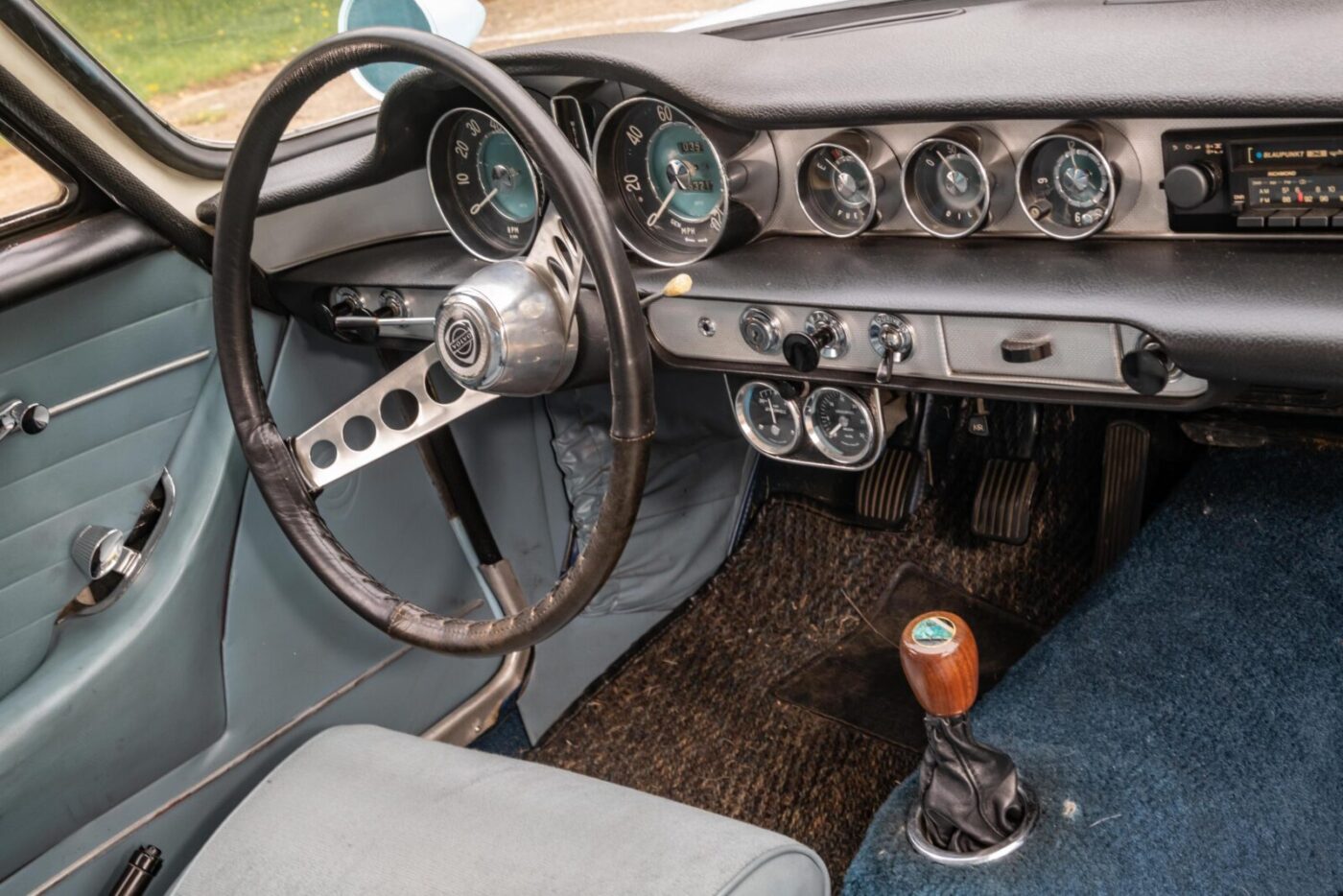
Leap of faith
By 1984, Mark and Paddy’s relationship had developed to the point where he opted to make a leap of faith.
“I took a chance and flew over here, not necessarily expecting that I was going to wind up living here. I thought maybe Paddy would come back with me, but I decided I liked it and she wasn’t that keen about going over there.” They were married that same year.
Everything Mark wanted to keep, including the Volvo, had been put into a storage locker he shared with his brother, a stone’s throw from Route 66.
“The car was up on blocks, properly mothballed – I even took the rocker shaft out of the engine,” he says.
“It didn’t move for 22 years. You couldn’t even get into the car at the time because everything was piled up against the doors.”
It wasn’t until 2006 that the Volvo joined Mark in Norfolk, following the untimely death of his brother Steve.
“Once my brother died there was less of a reason to go over there, so we went back and arranged for everything to be shipped, including the car,” he says, the Volvo trucked out to Long Beach, California, shipped through the Panama Canal, and into Chatham on the Thames.
From there, it was trucked to Lowestoft and trailered the short trip, comparatively, to south Norfolk.
“We got it in running order before it was shipped, so just had to get it MoTd once it was here.”
So what it was like, after more than two decades, getting back behind the wheel of a car he’d first driven 36 years before.
“Brought back memories”
“To a degree, it brought back memories,” he says. “It still had very much the New Mexico smell to it, very dry and sort of herby I suppose, with a bit of pollen. It still has a trace of that now.
“It also felt very heavy, and you realise how far cars have come in the meantime. For as good as it looks, it’s a slug. It’s not fast, it’ll go round the curves and all but my Skoda estate will run rings around it as a driving car.
“It’s got power brakes, but the steering is very heavy – you really had to be muscular to drive the thing.”
It may well have been left behind by the relentless march of technological advancement, but the P1800 is a beautiful car, almost certainly the prettiest ever to wear the Volvo badge.
“People like it,” says Mark. “It is an attractive car and it draws a lot of attention. I do enjoy the fact that people enjoy it when I take it out.”
Although he describes himself as “not particularly sentimental”, Mark admits that the old car means a lot to him.
“It’s part of my heritage, my history, so I love it, because it’s the one that I’ve had for 50 years,” he says.
